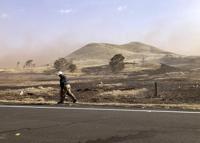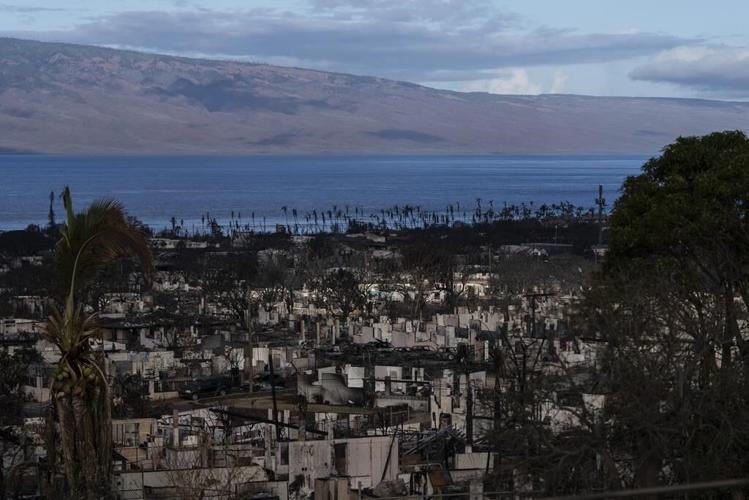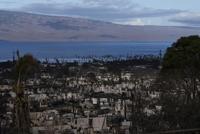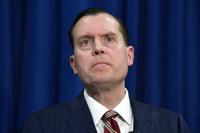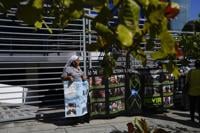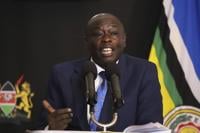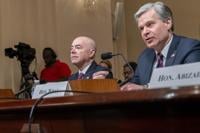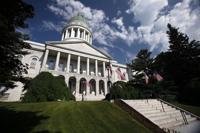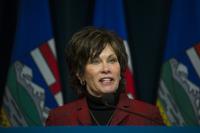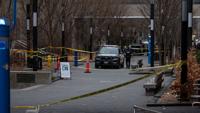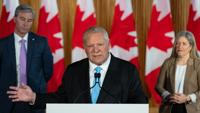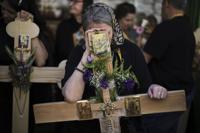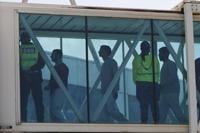KIHEI, Hawaii (AP) — Hurricane-fueled flash floods and mudslides. Lava that creeps into neighborhoods. Fierce drought that materializes in a flash and lingers. Earthquakes. And now, deadly fires that burn block after historic block.
Hawaii is increasingly and what is escalating most is wildfire, according to an Associated Press analysis of Federal Emergency Management Agency records. That reality can clash with the vision of Hawaii as paradise. It is, in fact, one of the riskiest states in the country.
“Hawaii is at risk of the whole panoply of climate and geological disasters," said Debarati Guha-Sapir, director of the international disasters database kept at the Centre for Research on the Epidemiology of Disasters at the Catholic University of Louvain in Belgium. She listed storms, floods, earthquakes, tsunamis and volcanoes.
Hawaii has been in more danger lately. This month alone, the federal government declared six different fire disasters in Hawaii — the same number recorded in the state from 1953 to 2003.
Across the United States, the number of acres burned by wildfires about tripled from the 1980s to now, with a drier climate from global warming a factor, according to the federal government’s and the In Hawaii, the burned area increased more than five times from the 1980s to now, according to figures from the University of Hawaii Manoa.
Longtime residents — like Victoria Martocci, who arrived on Maui about 25 years ago — know this all too well.
“Fire happened maybe once a year or once every two years. Over the last 10 years, it has been more frequent,” said Martocci, who lost a boat and her business, Extended Horizons Scuba, to
From 1953 to 2003, Hawaii averaged one of any type every two years, according to the analysis of FEMA records. But now it averages more than two a year, about a four-fold increase, the data analysis shows.
It’s even worse for wildfires. Hawaii went from averaging one federally declared fire disaster every nine years or so to one a year on average since 2004.
The fires on Maui reminded Native Hawaiian Micah Kamohoali’i of the state’s largest-ever wildfire, which burned through his family’s Big Island home in 2021.
That blaze “gave us an awareness of how dry things can be,” Kamohoali’i said.
Linda Hunt, who works at a horse stable in Waikoloa Village on the Big Island, had to evacuate in that fire. Given the abundance of dry grass on the islands from drought and worsening fires, Hunt said fire agencies need to “double or triple” spending on fire gear and personnel.
“They are stretched thin. and had to leave the truck,” she said. “Money should be spent on prevention and preparedness.”
FEMA assesses an in America and the risk index in Maui County is higher than nearly 88% of the counties in the nation. The federal disaster agency considers that a “relatively moderate” risk.
Hawaii’s Big Island has a risk index higher than 98% of U.S. counties.
A listed tsunamis, hurricanes, earthquakes, floods, health risks and cyber threats as high risk to people, but categorized wildfire as a “low” risk, along with drought, climate change and sea level rise.
Yet fire is the No. 1 cause of Hawaii's federally declared disasters, equaling the next three types of disaster combined: floods, severe storms and hurricanes. Hawaii by far has more federally declared fire disasters per square mile than any other state.
For most of the 20th century, Hawaii averaged about 5000 acres (about 20 square kilometers) burned per year, but that’s now up to 15,000 to 20,000 acres, said University of Hawaii Manoa fire scientist Clay Trauernicht.
“We’ve been getting these large events for the last 20 to 30 years," he said from Oahu.
What's happening is mostly because of changes in land use and the plants that catch fire, said Trauernicht. From the 1990s on, there has been a “big decline in plantation agriculture and a big decline in ranching," he said. Millions of acres of crops have been replaced with
He called it “explosive fire behavior.”
“This is much more a fuels problem,” Trauernicht said. “Climate change is going to make this stuff harder.”
Stanford University climate scientist Chris Field said “these grasses can just dry out in a few weeks and it doesn't take extreme conditions to make them flammable.”
That's what happened this year. For the first four weeks of May, Maui County had absolutely no drought, according to the U.S. drought monitor. By July 11, 83% of Maui was either abnormally dry or in moderate or severe drought. Scientists call that a flash drought.
Flash droughts are becoming more common because of human-caused climate change, .
Another factor that made the fires worse was Hurricane Dora, 700 miles (1,100 kilometers) to the south, which helped create storm-like winds that fanned the flames and spread the fires. Experts said it shows that the “synergy” between wildfire and other weather extremes, like storms.
Stanford's Field and others said it's difficult to isolate the effects of climate change from other factors on Hawaii's increasing disasters, but weather catastrophes are increasing worldwide. The nation has experienced a jump in federally declared disasters, and Hawaii has been hit harder.
Because Hawaii is so isolated, the state is often more self-sufficient and resilient after disasters, so when FEMA calculates risks for states and counties, Hawaii does well in recovery, said Susan Cutter, director of the Hazards Vulnerability and Resilience Institute at the University of South Carolina. Still, it shocks people to think of disasters in places they associate with paradise.
“Those are places of fantasy and nothing bad is supposed to happen there. You go there to escape reality, to leave pain behind, not face it head on,” said University of Albany emergency preparedness professor Jeannette Sutton. “Our perceptions of risk are certainly challenged when we have to think about the dangers associated with paradise, not just its exotic beauty.”
Maui resident Martocci said, “it is paradise 99% of the time.”
“We’ve always felt secure about living in paradise, and that everything will be OK,” she said. “But this has been a reality check for West Maui. A significant reality check.”
___
Borenstein reported from Washington and Wildeman reported from Hartford, Connecticut. Associated Press reporter Mike Casey in Boston contributed.
___
Follow AP’s climate and environment coverage at Follow Seth Borenstein and Bobby Caina Calvan at and .
___
Associated Press climate and environmental coverage receives support from several private foundations. See more about AP’s climate initiative The AP is solely responsible for all content.


